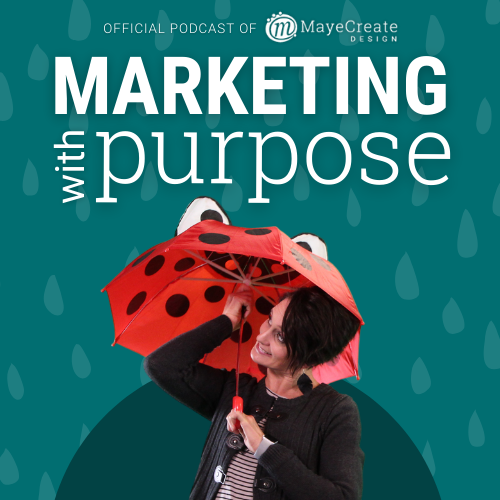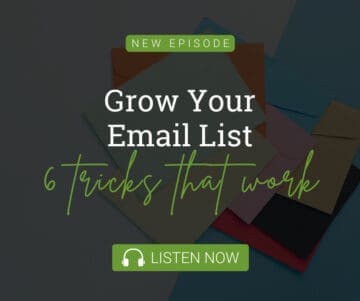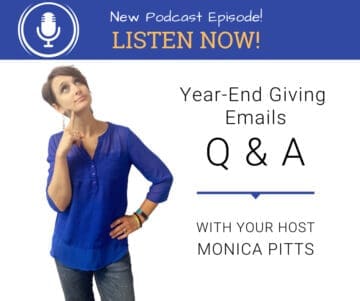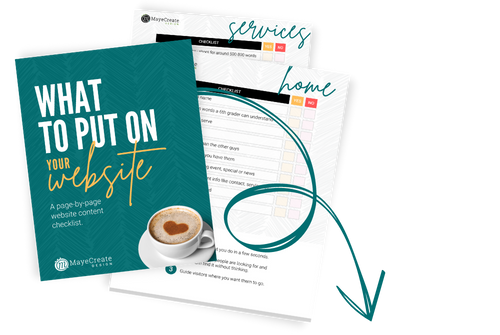Email Marketing Tips for Tracking Your Success
September 16, 2017
CONSUME CREATIVELY
This content is available in:
This content is available in:
TEXT
![]() Constant Contact surveyed small business owners and found that 49% do not use email marketing data to assist with their email marketing campaigns because they do not know where to begin. (Source: Constant Contact, 2016) If you’re reading this article I’m betting you’re in the 49% and you’re looking for the light at the end of the tunnel. Let me see if I can at least provide you with a flashlight.
Constant Contact surveyed small business owners and found that 49% do not use email marketing data to assist with their email marketing campaigns because they do not know where to begin. (Source: Constant Contact, 2016) If you’re reading this article I’m betting you’re in the 49% and you’re looking for the light at the end of the tunnel. Let me see if I can at least provide you with a flashlight.
Vocab to Know Before You Start
Before you can diagnose what’s going on with your metrics you’ll need to understand what the metrics mean. Let’s start there. The biggies we’ll be talking about are:
Open Rate – percentage of recipients who opened and looked at an email.
OPEN RATE = EMAILS OPENED / (EMAILS SENT – BOUNCES)
Click Through Rate – percentage of subscribers who clicked on one or more links within an email message. Helps determine email is relevancy and gauge recipient interest.
CLICK THROUGH RATE = UNIQUE CLICKS/(EMAILS SENT – BOUNCES)
List Growth Rate – the rate at which your email list grows
LIST GROWTH RATE = ([# OF NEW SUBSCRIBERS – [# OF UNSUBSCRIBES + (EMAIL/SPAM COMPLAINTS)])/TOTAL # OF EMAIL ADDRESSES ON LIST)*100 (PHEW!)
Unsubscribe Rate – persons who for one reason or another have opted out of receiving your emails.
UNSUBSCRIBE RATE = UNSUBSCRIBES/LIST SIZE
Conversion Rate – percentage of recipients who clicked on a link within an email and completed a desired action, such as filling out a lead generation form or purchasing a product.
CONVERSION RATE = NUMBER OF PEOPLE CONVERTED / TOTAL NUMBER OF RECIPIENTS
Take a Deeper Look
Now that you know what each means let’s look at what to expect from each and how you can work to improve a less than desirable metric.
Open Rate
Open rate is a good metric to gauge the success of your email titles. Getting readers to open your email is the first hurdle to sharing your message. Open rates will be higher for more successful subject lines.
Open rates vary per industry. According to MailChimp, a prominent email marketing service provider, average open rate for nonprofit emails is 24.98%, while open rates for marketing and advertising companies is closer to 17.81%. On average most businesses experience an open rate of around 21%.
It’s hard to measure the success of your campaign right off the bat. New lists, especially those containing past and current clients, generally experience a higher than average open rate for the first few emails, then open rates level off and become more consistent.
If you have a low open rate consider making a few adjustments:
- Adjust your subject lines. MailChimp claims, “When it comes to subject lines, boring works best. When you write your subject line, don’t sell what’s inside—tell what’s inside. If your email is a newsletter, put the name and issue of the newsletter in your subject line. Don’t write your subject lines like advertisements.”
- The best email subject line in MailChimp currently is “COMPANY NAME Sales & Marketing Newsletter” with an open rate of 60-87%, but “Last Minute Gift – We Have the Answer” only claims a 1-14% open rate.
- If you’re not sure what works for subject lines try A/B testing. Many email services allow you to send out the same email with two subject lines, testing the two on a small selection of your subscribers and then using the more popular subject line to title the remainder of the emails.
- Try sending emails at various times and days of the week. Tuesday is considered the best day to send business to business emails but it may not be the best for your business, you won’t know until you test and monitor.
- Consider segmenting your lists into groups based on shared traits or interests. Segmented email campaigns in 2016 had an open rate that is 14.32% higher than non-segmented campaigns according to MailChimp.
Open rate is an intriguing metric though it’s not always a true representation of the number of emails opened – if you don’t include images in your emails then you can’t measure open rates. Every time an email that includes an image is opened, the image is downloaded. That download is what counts as an open. Some mobile devices read email in text format only, so even if someone opens your email it may not report back as opened.
Click Through Rate (CTR)
Open rate isn’t the only metric that counts in a successful campaign. Balance open rate with click through rate (CTR) to better understand if your audience likes the content you’re sharing. For example if open rate is high but CTR is low you have a great email title with a poorly executed message.
Click through rate is a good measure of how much your audience likes your content. This metric also varies per industry, on average most business experience a CTR of slightly lower than 3%. Hobby emails then to have a CTR closer to 5.13% and construction related emails only average 1.95%.
Review the CTR for emails and consider writing more on the subjects with a higher engagement rate.
If you have a low CTR make sure you’re giving recipients a reason to click.
- If your entire newsletter content is available in your email there’s not a reason for recipients to click.
- Test your subject line against the content of the email it should be consistent with the information delivered in the body of the email.
- If you’re only using text hyperlinks in your emails consider using a button for your links. Campaign Monitor reports including a call to action button instead of a text link can increase conversion rates by as much as 28%.
- Consider using variables to personalize content with information from your subscribers’ profiles. Experian reported in 2016, brands that personalized promotional marketing emails experienced 27% higher unique click rates and 11% higher open rates than those that did not personalize.
- Make sure your email is mobile friendly. About 53% of emails are opened on mobile devices according to Campaign Monitor. Recipients won’t take the time to deal with your ill formatted email message which can lead to a lower CTR.
List Growth Rate
Your list growth rate helps you gauge not only how well you’re expanding your reach and increasing your audience size, it helps you combat the natural decay of your email marketing list, which drops at a rate of about 22.5% each year.
Adding pop ups or well-placed call-outs to your blog posts or online newsletters is one way to improve this metric. And if you don’t already have one, placing an email signup form in the obvious locations on your website can help as well. After all, you can’t expect people to sign up if you don’t ask.
Unsubscribe Rate
This is a big picture metric you can use to determine if you’re delivering on your promises or abusing your list. If subscribers leave your list often you may be sending too many emails or not sharing the types of information they anticipated when signing up for the list.
Your unsubscribe rate will likely be higher after gathering emails from an event or trade show. Most businesses have an unsubscribe rate of around 0.2%. If your subscribers opt out of your list quickly after just a few emails it’s a good indication you’re not sending good content. When content is good subscribers stick around for more.
Conversion Rate
When using the conversion metric you’re addressing the success of many elements – starting with title to entice recipients to open the email, then the message that makes then click and finally the ability for your landing page to convert a visitor to a sale or lead. If you’re open rate is great and your click through rate is up to par but you’re not converting visitors to leads the problem lies in your landing page.
Conversion may seem obscure but can actually be fairly easy to measure once set up. In just two clicks you can sync MailChimp with your Google Analytics account to measure the activity of website visitors from your email campaigns. Constant Contact also offers Google Analytics integration. If you don’t have the opportunity to integrate you can also create a custom segment to filter out email traffic on your analytics report.
To set up a successful conversion measurement you first have to determine what you want people to do on your site. Do you want them to buy a product? Visit more than two pages? Download an offering or complete an email form. You can employ the goal tracking in Google Analytics to quickly answer these types of questions.
If your click through rate is good but your conversions are low consider the following:
- If you’re selling a product or service make a specific landing page to draw visitors into the site don’t just send them to the home page and expect them to figure it out from there visitors won’t stick around and you’ll lose the opportunity to convert.
- Double check that your landing page content matches with the email message. Deliver on the promises you made in the email. Conflicting messages sends a warning sign to visitors and they will often leave quickly.
- Make sure your email form isn’t asking for too much information, the less your ask for the more likely people are to complete the form.
- Great landing pages come in all shapes, it’s just a matter of which one works best for your audience. Consider investigating our parts of a landing page and landing page best practices articles for a more in-depth look at the psychology behind a high converting page.
Ultimately email marketing is not so different from all types of marketing. If you want to know if it’s working you have to review the numbers and try different tactics until you get the results you crave. If you’re feeling super overwhelmed call for backup! YouTube, Google, or even hiring a consultant may be just the flashlight you need to see the light at the end of your email marketing tunnel.
For more information on benchmarking your email metrics see MailChimp’s report: http://bitly.com/29u4f3R.
Who Manifested This Madness?

This fabulous human, that's who.
Monica Maye Pitts
Monica is the creative force and founder of MayeCreate. She has a Bachelor of Science in Agriculture with an emphasis in Economics, Education and Plant Science from the University of Missouri. Monica possesses a rare combination of design savvy and technological know-how. Her clients know this quite well. Her passion for making friends and helping businesses grow gives her the skills she needs to make sure that each client, or friend, gets the attention and service he or she deserves.






